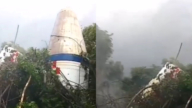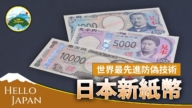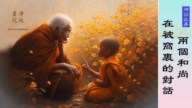【新唐人2014年06月24日讯】周日在世界遗产大会上,拥有2000多年历史文明的中国“大运河”和“丝绸之路”,双双被列入《世界遗产名录》。至此,中国的世界遗产总数达到了47项,稳居世界第二。不过有评论指出,中共把传统文化及生态环境破坏殆尽后,每年再耗费巨资“申遗”,无非是利用这一项目炫耀政绩和捞钱,缺乏保护古迹及敬天畏地的概念。
6月22号,在卡达多哈市举行的第38届“世界遗产”大会上,中国“大运河”被成功列入世界遗产名录。世界遗产委员认为,“大运河”是世界上最长、最古老的人工水道,也是工业革命前规模最大、范围最广的土木工程项目。
中国与吉尔吉斯、哈萨克联合申请的“丝绸之路”项目,22号也被列入“世界文化遗产”名录。世界遗产委员会把“丝绸之路”形容为﹕东西方之间融合与交流的对话之路,为人类的共同繁荣作出重要贡献。
自1985年中共加入《保护世界文化与自然遗产公约》后,几乎每年都要拿出数个项目申报“世界遗产”。目前,中国“世界遗产”数量已达到47项,位居世界第二。
前“山东大学”教授孙文广指出,中共每年耗费纳税人巨额金钱去申请“世界遗产”,无非就是为了炫耀它的政绩和捞钱。
前山东大学教授孙文广:“它不是真正把它当地经济搞上去,把当地的环境治理好,或者人民的生活有了更大的改善,不是从这些方面去做,搞一些哗众取宠的办法,提高当地的知名度,申遗就是其中很重要的一项,不惜各种手段来换取一个很虚假的名目。”
孙文广指出,在各地官员眼中,只要有了“世界遗产”这块“金牌”招牌,就可带动旅游赚大钱。
1997年成功申遗的山西平遥古城,1998年门票收入由申报前的18万元跃高到500多万元,翻了近30倍。而云南丽江古城被列入世界文化遗产后,旅游收入达13亿元,占到当地GDP的50%。
近几年来,各地政府更是不惜劳民伤财的投入巨额资金,只为赢得“世遗”的金招牌。据了解,这次“大运河”申遗,从地方到中央,至少投入100亿元资金。而五台山仅景区整治搬迁就花费8亿元﹔丹霞地貌投入十几亿﹔连年收入不到2亿元的湖南崀山,当地政府为了“申遗”,投入4亿多元,银行贷款1亿5500万元。
“联合国教科文组织”去年公布,中国每年在申遗工作上的花费高达3亿元。有些地方还为“申遗”肆意迁拆村落,引发冲突﹔有的地方“申遗”成功后,把“世界遗产”当作摇钱树,忽视了保护管理,造成破坏。
早在2005年,北京五大世界遗产,已经产生高达32亿元的修缮资金缺口,而西安“兵马俑博物馆”年收入1亿5000万,维护费用只有几百万元。
这次申遗的“大运河”,在严重污染的情况下仍然进入了世界名录。可是,“大运河”曾出现过断流、淤塞等现象,中共经过8年的治理,目前“大运河”水质依然污染严重。
有大陆专家警告,“大运河”申遗成功,势必推动旅游业而再度遭到污染,当局应加强保护。
时政评论员汪北稷指出,中共早已把中华传统文化摧毁殆尽,对生态环境的破坏更是史无前例,造成大量山川河流枯死,整个中国被阴霾笼罩。讽刺的是,中共每年还在不惜重金申请所谓的“世界文化遗产”。
时政评论员汪北稷:“中华民族生活的这个国土上,很多美丽的山河,古迹和自然环境,中共它主宰这个政权,完全的、彻底的、破坏性的去掠夺它,掠夺它的资源,破坏它的绿化,破坏它的野生动物、植物、生物,以及它的人民所居住的环境,就是人文环境和自然环境都被彻底的破坏了。”
“联合国教科文组织”曾经针对中共早年成功“申遗”的周口店遗址坍塌,以及丽江古城的过度开发做出过警告。2001年“世界遗产委员”也对中共的“申遗热”做出限制,规定每年入选项目提名限制为30个,每个国家每年最多只能有一处地方入选世界遗产。
采访编辑/李韵 后制/孙宁
The Grand Canal and the Silk Road are Inscribed On the World
Heritage List
The Grand Canal and the Silk Road inChina, with 2000 years
of history were included in the World Heritage List at the
World Heritage Convention on Sunday.
So far, China’s World Heritage sites reached 47 and
ranked second in the world.
However, it has been commented that the Chinese Communist
Party (CCP) tried to show off their achievement and make
money by applying for world heritage status with
huge amounts of money every year after destroying
the environment and traditional culture.
They have no concept of the protection of monuments
nor respect for heaven and earth.
June 22, China’s Grand Canal was successfully inscribed on the
World Heritage List at the 38th session of the World Heritage
Convention held in Doha city.
World Heritage Committee believes that the Grand Canal is
the world’s longest, oldest artificial waterway and also the
world’s largest and most extensive civil engineering project
prior to the Industrial Revolution.
Jointly submitted by China, Kazakhstan and Kyrgyzstan, the
application for adding the Silk Road to the World Heritage list
was approved on June 22nd.
The World Heritage Committee described the Silk Road as a
dialogue path for integration and exchange between Asia
and Europe which made an important contribution to the
common prosperity of mankind.
Since 1985, CCP applied for the World Heritage almost every
year after joining World Cultural and Natural Heritage Protection.
Currently, China World Heritage reached 47, ranking second
in the world.
Former Shandong University professor Sun Wenguang pointed
out that the CCP’s World Heritage application with money
from the taxpayer each year is nothing more than to show off
its achievements and make money.
Sun Wenguang: “They don’t want to boost the local economy,
change the local environment or improve people’s lives.
They don’t improve from these sides, but use grandstanding
approaches to improve local visibility.
The world heritage application is an important way to get a false
name by all means."
Sun Wenguang pointed out that in the local officials’ eyes, the
gold sign of World Heritage can promote tourism and bring
more money.
1997’s successful inscription of ancient Pingyao city increased
ticket sales from 120 thousand Yuan before application to
5 million Yuan in 1998.
Ancient Lijiang city’s tourism revenue reached 1.3 billion
yuan after being included on theworld cultural heritage list,
accounting for 50% of local GDP.
In recent years, local governments spared no efforts to win
the gold insignia of World Heritage with lots of money.
It is said they invested at least 10 billion Yuan
from local to central for the Grand Canal inscription.
It took 0.8 billion for Mount Wutai’s restoration and relocation;
more than one billion for Danxia landform.
The local government invested more than 400 million
including 155 million Yuan bank loan to apply for
Hunan Liangshan although its annual income is
less than 200 million Yuan.
Last year, UNESCO said it takes 300 million Yuan
per year in China for inscription application.
Some places wantonly demolished villages for World Heritage
application and caused conflict.
Some places have world heritage status as a money tree
without protection and management, resulting in damage.
As early as 2005, Beijing’s five world heritage sites have
produced up to 3200 million Yuan to repair the funding gap.
The Terracotta Warriors Museum in Xi’an has an annual income
of 150 million Yuan, but costs only few million Yuan to maintain.
The Grand Canal inscribed on the World Heritage List is
under severe contamination.
However, the Grand Canal had cut-out and silted up before.
After 8 years CCP governance, the current Grand Canal still
has serious water pollution.
Mainland experts warned the Grand Canal’s inscription on the
World Heritage List can promote tourism but contaminate the
water; the authorities should strengthen protection.
Wang Beiji, current affairs commentator, pointed out the CCP
had destroyed traditional Chinese culture and even caused
unprecedented ecological destruction, resulting
in a large number of dead mountains and rivers.
The whole of China is covered by haze.
Ironically, the CCP still applies for so-called world cultural
heritage at great cost.
Wang Beiji: “The land of China has lot of beautiful mountains,
rivers, historic spots and natural environments.
The CCP regime completely, thoroughly and destructively
plunders the resources, destroys the greenery, wild animals,
plants, and living environment from here.
It means they completely destroy human environment and the
natural environment."
UNESCO had a warning on the collapse of Zhoukoudian
and over-exploitation of the old town of Lijiang
which were listed as world heritage in the early days.
2001, the World Heritage Committee also limited CCP’s
world heritage application by 30 nominations
on selected projects per year and only one selected
world heritage each country per year.
Edit/LiYun Post-Production/SunNing































